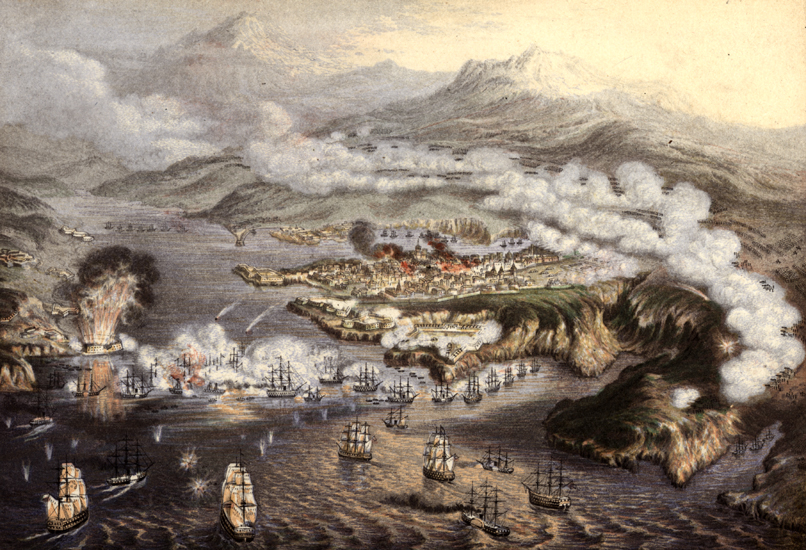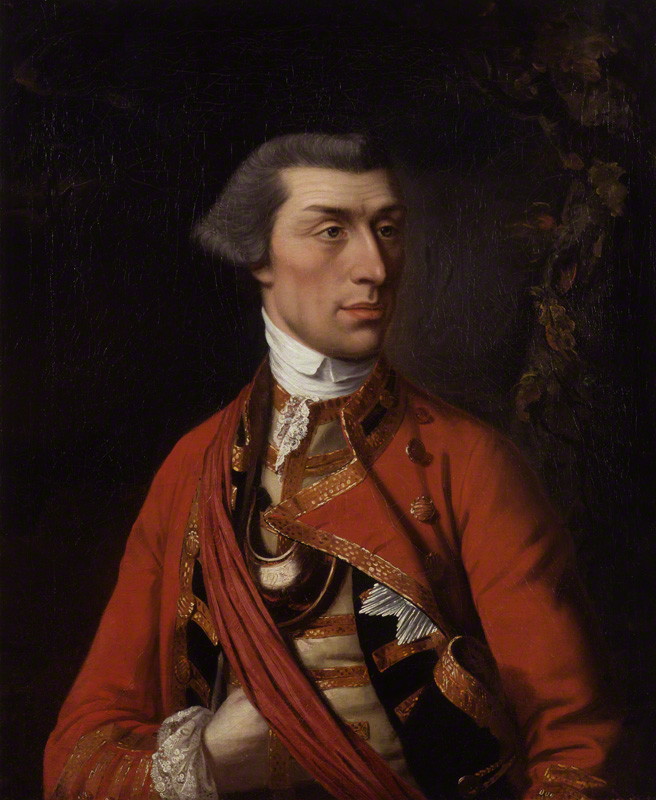|
Charles Van Straubenzee
General Sir Charles Thomas van Straubenzee (17 February 1812 – 10 August 1892), was a British Army officer. He served as Commander of British Troops in China and Hong Kong, and Governor of Malta. Military career Van Straubenzee was born at Fort Ricasoli, Malta, in 1812, as the second son of Thomas van Straubenzee (1782–1843), a Royal Artillery major, of Spennithorne, Yorkshire, and his wife Maria, youngest daughter of Major Henry Bowen. A member of an old and distinguished military family, Van Straubenzee was commissioned into the Ceylon Rifle Regiment in 1828.Vetch, R. H.. "Straubenzee, Sir Charles Thomas Van (1812–1892), rev. Roger T. Stearn". ''Oxford Dictionary of National Biography'' (2004 ed.). Oxford University Press. . Retrieved 25 August 2016. He transferred to the 39th Regiment of Foot in 1833, and, during the Gwalior campaign, he took part in the Battle of Maharajpore in 1843; he took temporary command of his regiment when its commanding officer was w ... [...More Info...] [...Related Items...] OR: [Wikipedia] [Google] [Baidu] |
Fort Ricasoli
Fort Ricasoli ( mt, Forti Rikażli) is a bastioned fort in Kalkara, Malta, which was built by the Order of Saint John between 1670 and 1698. The fort occupies a promontory known as Gallows' Point and the north shore of Rinella Bay, commanding the entrance to the Grand Harbour along with Fort Saint Elmo. It is not only the largest fort in Malta but also the largest in Europe, and it has been on the tentative list of UNESCO World Heritage Sites since 1998, as part of the ''Knights' Fortifications around the Harbours of Malta''. Fort Ricasoli saw use during the French invasion of Malta in 1798 and the subsequent Maltese insurrection, after which it ended up in British hands. Ricasoli was the site of the Froberg mutiny in 1807, and it was also used as a military hospital during the 19th century. It saw use once again in World War II, when parts of it were destroyed by aerial bombardment. After it was decommissioned in the 1960s, the fort was used for industrial purposes. Toda ... [...More Info...] [...Related Items...] OR: [Wikipedia] [Google] [Baidu] |
Sir Charles Thomas Van Straubenzee
''Sir'' is a formal honorific address in English for men, derived from Sire in the High Middle Ages. Both are derived from the old French "Sieur" (Lord), brought to England by the French-speaking Normans, and which now exist in French only as part of "Monsieur", with the equivalent "My Lord" in English. Traditionally, as governed by law and custom, Sir is used for men titled as knights, often as members of orders of chivalry, as well as later applied to baronets and other offices. As the female equivalent for knighthood is damehood, the female equivalent term is typically Dame. The wife of a knight or baronet tends to be addressed as Lady, although a few exceptions and interchanges of these uses exist. Additionally, since the late modern period, Sir has been used as a respectful way to address a man of superior social status or military rank. Equivalent terms of address for women are Madam (shortened to Ma'am), in addition to social honorifics such as Mrs, Ms or Miss. Etymo ... [...More Info...] [...Related Items...] OR: [Wikipedia] [Google] [Baidu] |
Battle Of Canton (1857)
The Battle of Canton () was fought by British and French forces against Qing China on 28–31 December 1857 during the Second Opium War. The British High Commissioner, Lord Elgin, was keen to take the city of Canton (Guangzhou) as a demonstration of power and to capture Chinese official Ye Mingchen who had resisted British attempts to implement the 1842 Treaty of Nanking. Elgin ordered an Anglo-French force to take the town and an assault began on 28 December. Allied forces took control of the city walls on 29 December but delayed entry into the city itself until 5 January. They subsequently captured Ye and some reports state they burnt down much of the town. The ease with which the allies won the battle was one of the reasons for the signing of the Treaty of Tientsin in 1858. Prelude The British had been permitted access to Canton (Guangzhou) at the end of the First Opium War under the terms of the 1842 Treaty of Nanking, but were being illegally barred from entry by its v ... [...More Info...] [...Related Items...] OR: [Wikipedia] [Google] [Baidu] |
Siege Of Sevastopol (1854–1855)
The siege of Sevastopol (at the time called in English the siege of Sebastopol) lasted from October 1854 until September 1855, during the Crimean War. The allies (French, Sardinian, Ottoman, and British) landed at Eupatoria on 14 September 1854, intending to make a triumphal march to Sevastopol, the capital of the Crimea, with 50,000 men. Major battles along the way were Alma (September 1854), Balaklava (October 1854), Inkerman (November 1854), Tchernaya (August 1855), Redan (September 1855), and, finally, Malakoff (September 1855). During the siege, the allied navy undertook six bombardments of the capital, on 17 October 1854; and on 9 April, 6 June, 17 June, 17 August, and 5 September 1855. The Siege of Sevastopol is one of the last classic sieges in history. The city of Sevastopol was the home of the Tsar's Black Sea Fleet, which threatened the Mediterranean. The Russian field army withdrew before the allies could encircle it. The siege was the culminating struggl ... [...More Info...] [...Related Items...] OR: [Wikipedia] [Google] [Baidu] |
Redan
Redan (a French word for "projection", "salient") is a feature of fortifications. It is a work in a V-shaped salient angle towards an expected attack. It can be made from earthworks or other material. The redan developed from the lunette, originally a half-moon-shaped outwork; with shorter flanks it became a redan. History Redans were a common feature in the coastal batteries built in Malta between 1715 and the end of the 18th century. Surviving batteries with redans include Mistra Battery and Saint Anthony's Battery. The Russians used redans on their left at the Battle of Borodino against Napoleon. A small redan whose faces make an obtuse angle with a vertex toward the enemy is called a '' flèche'' (arrow in French). The '' Bagration flèches'' were three redans backwards in echelon. The Shevardino Redoubt (another redan) was erected as an early warning post a mile in front of the Bagration flèches. The "Redan hole" in golf A ''Redan hole'' or ''Redan'' is an a ... [...More Info...] [...Related Items...] OR: [Wikipedia] [Google] [Baidu] |
Commanding Officer
The commanding officer (CO) or sometimes, if the incumbent is a general officer, commanding general (CG), is the officer in command of a military unit. The commanding officer has ultimate authority over the unit, and is usually given wide latitude to run the unit as they see fit, within the bounds of military law. In this respect, commanding officers have significant responsibilities (for example, the use of force, finances, equipment, the Geneva Conventions), duties (to higher authority, mission effectiveness, duty of care to personnel), and powers (for example, discipline and punishment of personnel within certain limits of military law). In some countries, commanding officers may be of any commissioned rank. Usually, there are more officers than command positions available, and time spent in command is generally a key aspect of promotion, so the role of commanding officer is highly valued. The commanding officer is often assisted by an executive officer (XO) or second-in-c ... [...More Info...] [...Related Items...] OR: [Wikipedia] [Google] [Baidu] |
39th Regiment Of Foot
The 39th (Dorsetshire) Regiment of Foot was an infantry regiment of the British Army, raised in 1702. Under the Childers Reforms it amalgamated with the 54th (West Norfolk) Regiment of Foot to form the Dorsetshire Regiment in 1881. History Early years The regiment was first raised by Adam Loftus, 1st Viscount Lisburne as Viscount Lisburne's Regiment of Foot in 1689 but was disbanded in 1697. It was re-raised in Ireland, without lineal connection to the previous regiment, by Colonel Richard Coote as Richard Coote's Regiment of Foot in August 1702. The regiment landed at Lisbon in June 1707 for service in the War of the Spanish Succession.Cannon, p. 3 It saw action at the Battle of La Gudina in May 1709Cannon, p. 5 and then remained in Portugal until 1713 when it embarked for Gibraltar and then moved to Menorca later in the year.Cannon, p. 8 It was posted to Ireland in 1719 and sailed to Gibraltar in 1726 to reinforce the garrison.Cannon, p. 9 The regiment sailed for Jamaica in 172 ... [...More Info...] [...Related Items...] OR: [Wikipedia] [Google] [Baidu] |
Ceylon Rifle Regiment
The Ceylon Rifle Regiment (CRR) was a regular native regiment formed by the British in Ceylon. Its history goes back to 1795. The nucleus of the Regiment was two companies of Malays recruited from among prisoners at St Helena. In 1795 there were some 300 prisoners there taken from vessels of the Dutch East India Company. Some 70 or 80 Danes, Norwegians, and Swedes joined the British East India Company. The Malays apparently were glad to serve under British command as they found the treatment they received much better than that to which the Dutch had subjected them. The men of the two companies were trained as artillerymen. After about two years, the companies were transferred to Bencoolen, and later from there to Ceylon.Brooke (1824), pp.313–4. In all, five independent companies of Malays were transferred from Dutch to HEIC service. Since then the regiment under different names fought for the British in the Kandyan War and the Uva Rebellion of 1818. The Ceylon Rifle Regi ... [...More Info...] [...Related Items...] OR: [Wikipedia] [Google] [Baidu] |
Yorkshire
Yorkshire ( ; abbreviated Yorks), formally known as the County of York, is a historic county in northern England and by far the largest in the United Kingdom. Because of its large area in comparison with other English counties, functions have been undertaken over time by its subdivisions, which have also been subject to periodic reform. Throughout these changes, Yorkshire has continued to be recognised as a geographic territory and cultural region. The name is familiar and well understood across the United Kingdom and is in common use in the media and the military, and also features in the titles of current areas of civil administration such as North Yorkshire, South Yorkshire, West Yorkshire and the East Riding of Yorkshire. Within the borders of the historic county of Yorkshire are large stretches of countryside, including the Yorkshire Dales, North York Moors and Peak District national parks. Yorkshire has been nicknamed "God's Own Country" or "God's Own County" by its i ... [...More Info...] [...Related Items...] OR: [Wikipedia] [Google] [Baidu] |







